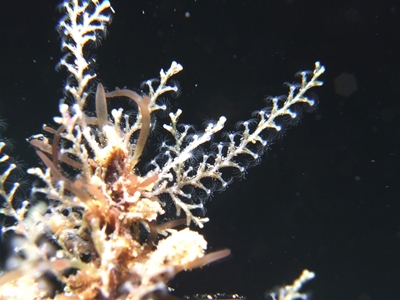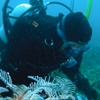General Description
Colony of individual polyps (hydranths) joined by root-like network of tubular stolons at the base. Colony shape is single stems. Colour: colony white, buff or yellow, eggs yellow to pink. Up to 1.5 cm high.
Biology
These hydroids are widespread in southern Australian seas although some are small and cryptic and therefore not easily seen. Their colonies grow throughout year.
Habitat
On algae and invertebrates, common in sheltered oceanic waters and bays.
Reefs
Distribution guide
New Zealand and south-eastern Australia.
Species Group
Depth
Water Column
Max Size
15 mm
Diet
Plankton or Particles
Harmful
Generally not harmful but still able to sting bare skin.
Commercial Species
No
Global Dispersal
Recorded in Australia
Species Code
MoV 3478
Identify
Conservation Status
- DSE Advisory List : Not listed
- EPBC Act 1999 : Not listed
- IUCN Red List : Not listed







